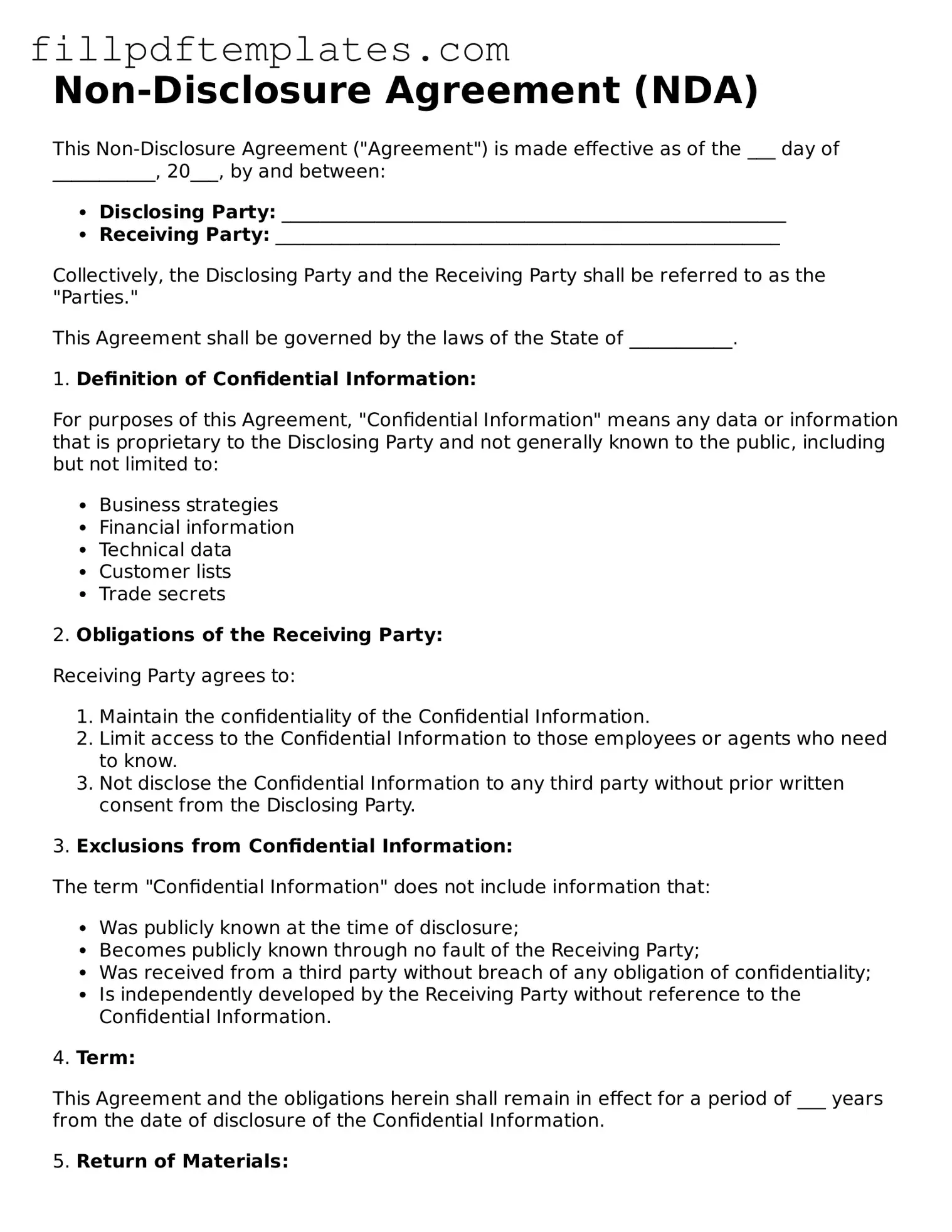Non-Disclosure Agreement (NDA)
This Non-Disclosure Agreement ("Agreement") is made effective as of the ___ day of ___________, 20___, by and between:
- Disclosing Party: ______________________________________________________
- Receiving Party: ______________________________________________________
Collectively, the Disclosing Party and the Receiving Party shall be referred to as the "Parties."
This Agreement shall be governed by the laws of the State of ___________.
1. Definition of Confidential Information:
For purposes of this Agreement, "Confidential Information" means any data or information that is proprietary to the Disclosing Party and not generally known to the public, including but not limited to:
- Business strategies
- Financial information
- Technical data
- Customer lists
- Trade secrets
2. Obligations of the Receiving Party:
Receiving Party agrees to:
- Maintain the confidentiality of the Confidential Information.
- Limit access to the Confidential Information to those employees or agents who need to know.
- Not disclose the Confidential Information to any third party without prior written consent from the Disclosing Party.
3. Exclusions from Confidential Information:
The term "Confidential Information" does not include information that:
- Was publicly known at the time of disclosure;
- Becomes publicly known through no fault of the Receiving Party;
- Was received from a third party without breach of any obligation of confidentiality;
- Is independently developed by the Receiving Party without reference to the Confidential Information.
4. Term:
This Agreement and the obligations herein shall remain in effect for a period of ___ years from the date of disclosure of the Confidential Information.
5. Return of Materials:
Upon termination of this Agreement, the Receiving Party agrees to return or destroy all materials containing Confidential Information immediately upon request of the Disclosing Party.
6. Governing Law:
This Agreement shall be governed by and construed in accordance with the laws of the State of ___________.
7. Signatures:
By signing below, the Parties acknowledge their agreement to be bound by the terms and conditions of this Non-Disclosure Agreement.
_______________________________
Disclosing Party
Date: ________________________
_______________________________
Receiving Party
Date: ________________________
